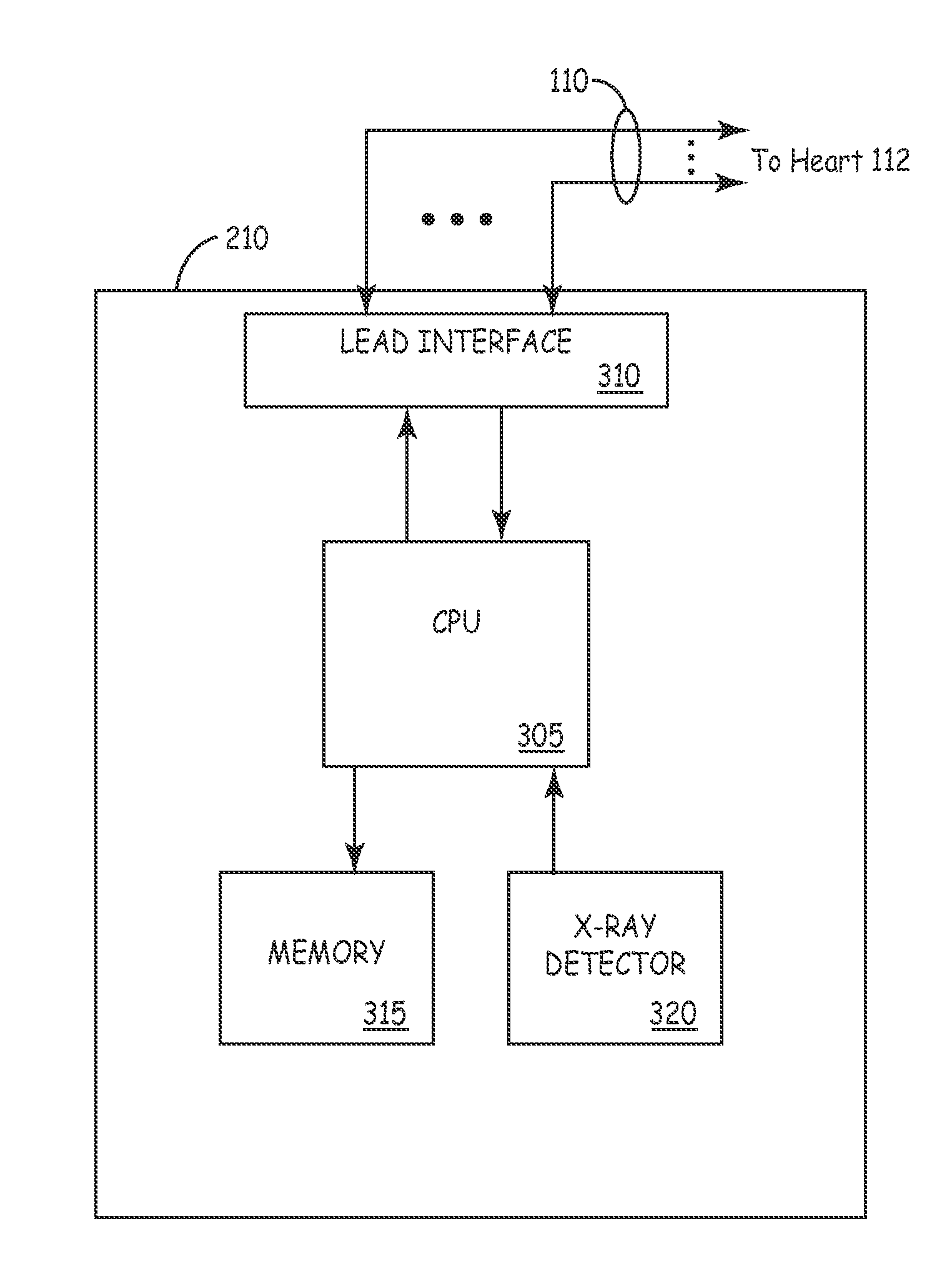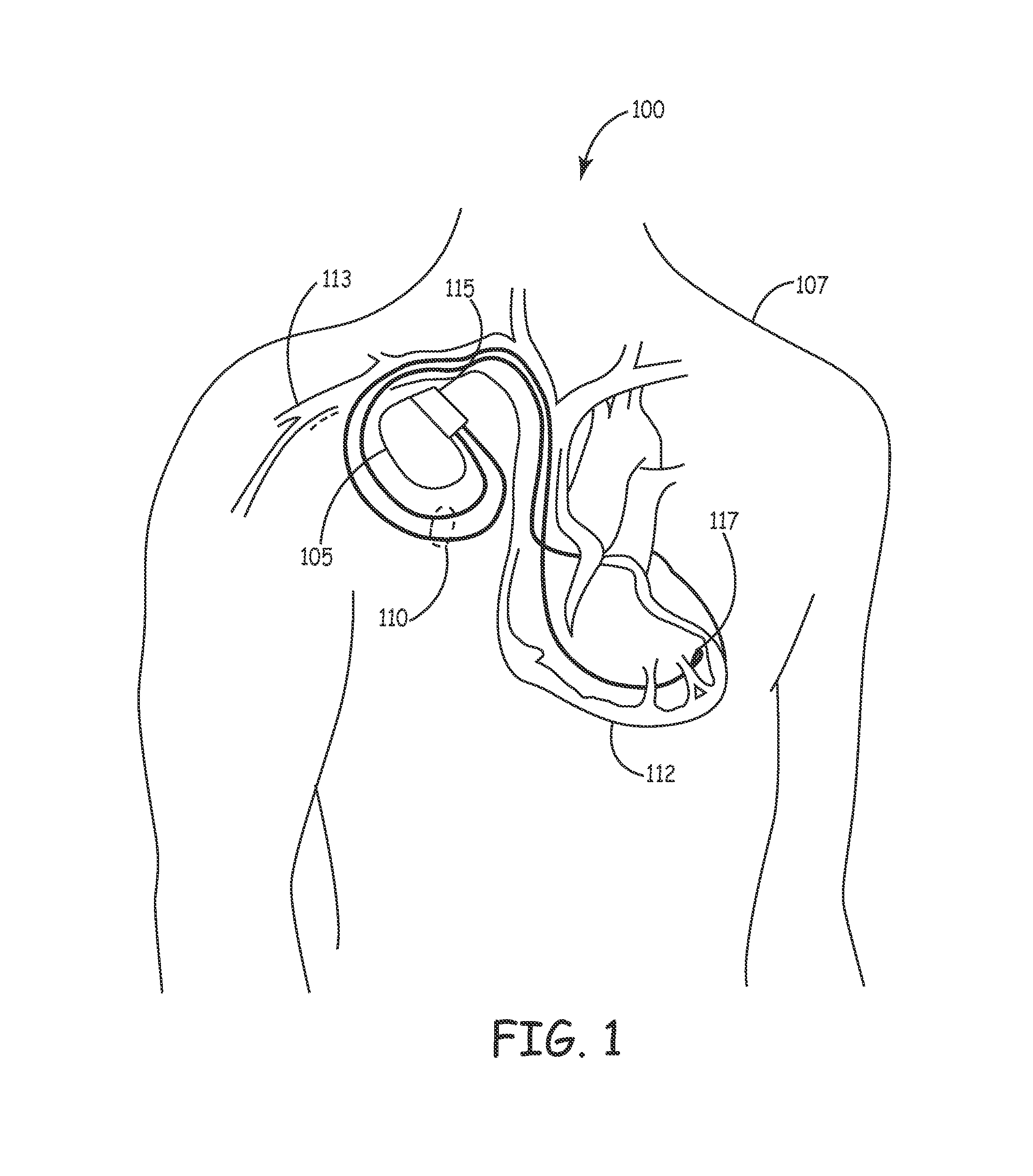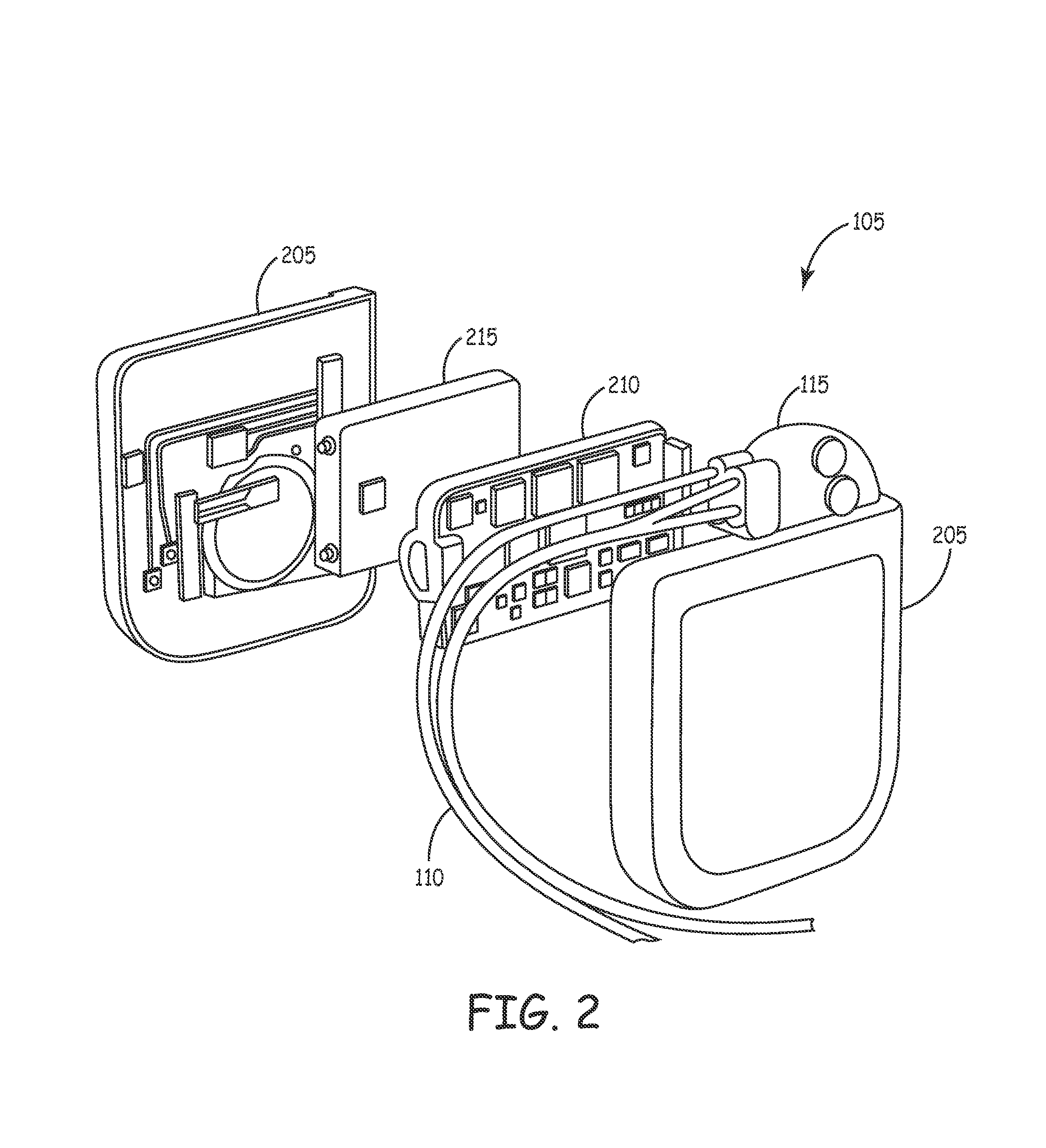Methods and apparatus for reducing deleterious effects of x-ray radiation upon implantable medical device circuitry
a technology for implantable medical devices and circuits, applied in the field of methods and apparatus for reducing the negative effects of x-ray radiation impinging on the operation circuitry, can solve the problems of increasing the complexity and sophistication of the imds, unable to perform significantly more complex tasks, and the imds are vastly more sophisticated and complex. achieve the effect of small surface area
- Summary
- Abstract
- Description
- Claims
- Application Information
AI Technical Summary
Benefits of technology
Problems solved by technology
Method used
Image
Examples
example
Standard X-Ray
[0061]For this testing, the x-ray source was directed from the topside of a table, so it impinged upon the flip-chip side of the hybrid first. The microprocessor and sense amplifier chips are mounted on the flip-chip side of the hybrid, so the radiation penetrated from the backside of the die. The tube settings ranged from 120 KV & 143 mA for a 1 sec (143 mAs) exposure to 120 KV & 49 mA for the 16 sec (778 mAs) exposure. The response observed at the sense amplifier was an AC-coupled high-pass waveform. The voltage gain to the sense amplifier was approximately 1000. The most likely cause of the large transient voltage is a shift in the offset voltage of one of the previous stages in the sense amplifier. A shift of 8 mV was seen in the voltage reference, and it is assumed that a similar shift is occurring somewhere in the sense amplifier. The sensor output was 120 mV for the 120 KV / 143 mA / 1 sec exposure setting. The IB50 test output was monitored during the exposure by r...
PUM
| Property | Measurement | Unit |
|---|---|---|
| threshold energy | aaaaa | aaaaa |
| voltage | aaaaa | aaaaa |
| sampling clock frequency | aaaaa | aaaaa |
Abstract
Description
Claims
Application Information
 Login to View More
Login to View More - R&D
- Intellectual Property
- Life Sciences
- Materials
- Tech Scout
- Unparalleled Data Quality
- Higher Quality Content
- 60% Fewer Hallucinations
Browse by: Latest US Patents, China's latest patents, Technical Efficacy Thesaurus, Application Domain, Technology Topic, Popular Technical Reports.
© 2025 PatSnap. All rights reserved.Legal|Privacy policy|Modern Slavery Act Transparency Statement|Sitemap|About US| Contact US: help@patsnap.com



